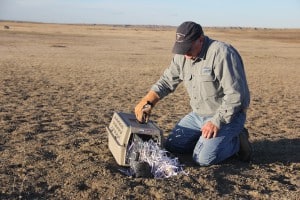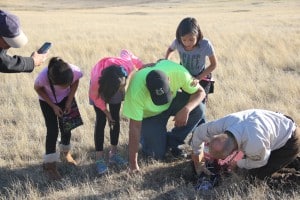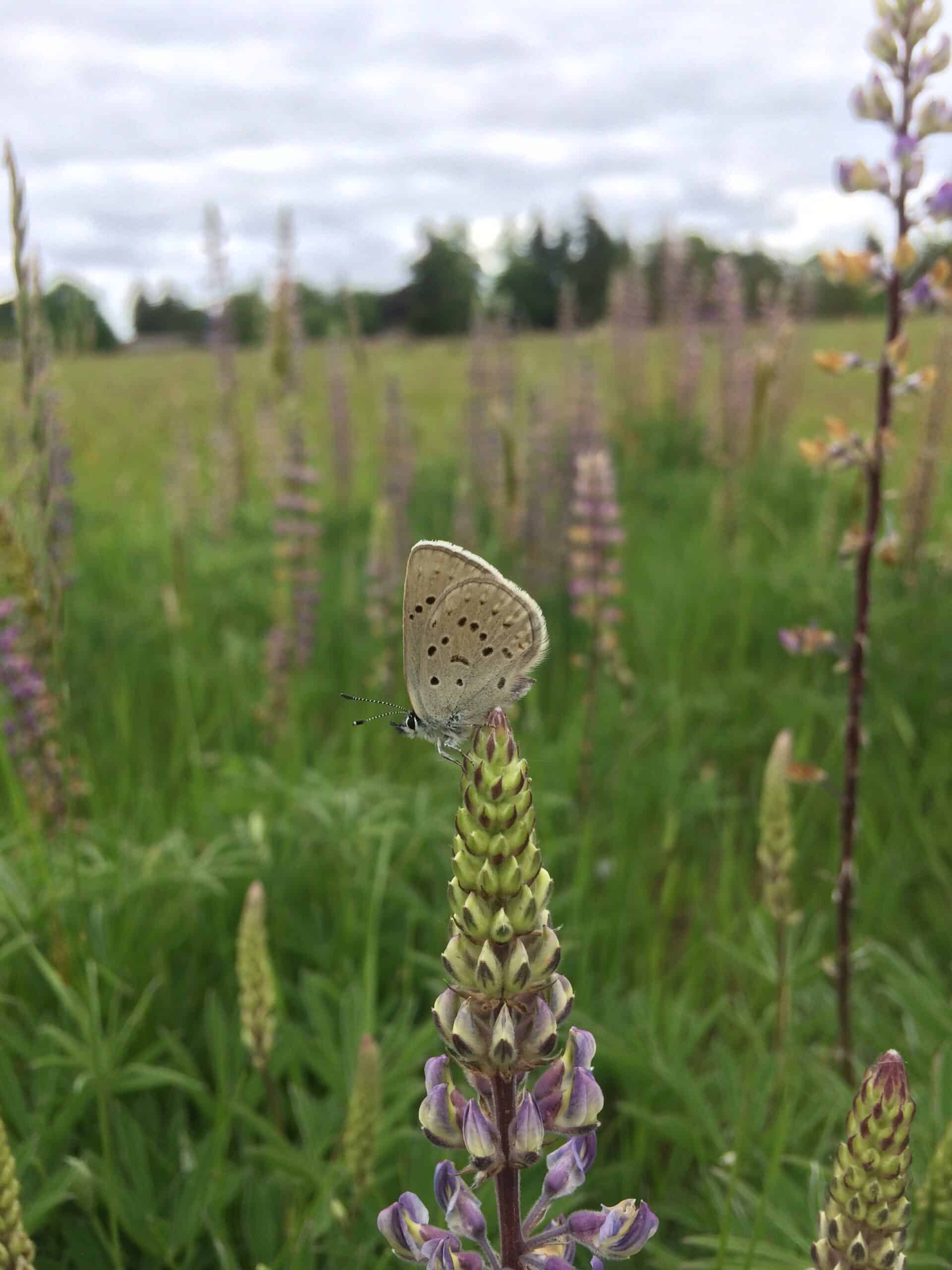Share this article
Supporting Black-footed Ferret Recovery
Black-footed ferret recovery took two new steps forward in October, with releases outside of Denver at the Rocky Mountain Arsenal National Wildlife Refuge and on the Crow Nation lands east of Billings, Montana. Considered one of the most endangered North American mammals, these ferrets are part of a captive breeding program, established from the last 18 individuals in the wilds of Wyoming. Plague remains a major barrier to ferret recovery.

WS-MT wildlife disease biologist Jerry Wiscomb releases a black-footed ferret on Crow Nation lands in Montana. Image Credit: USDA Wildlife Services
The Denver-metro refuge provides ideal shortgrass prairie habitat and an abundant prey base of black-tailed prairie dog colonies. In the Oct. 5th release of 32 ferrets, the U.S. Fish and Wildlife Services also celebrated the opening of a ferret exhibit at the Refuge’s visitor center. In the first release of black-footed ferrets on Crow Nation lands, 29 ferrets were released and the Crow Nation celebrated the return of black-footed ferrets to their ancestral lands of high-quality sage brush habitat, completing the prairie dog/ferret ecosystem.
Wildlife Services staff participated at both releases in recognition of our contribution towards black-footed ferret recovery. Over the past two years, Wildlife Services in Colorado, Montana and Arizona has distributed Delta-dust to prevent flea-borne plague in prairie dog colonies on thousands of acres where ferret releases were planned, such as the refuge, and near locations where the ferrets have already been released on private lands. During the summer of 2015, Wildlife Services in Montana employed three wildlife technicians to dust colonies in both Stillwater and Big Horn counties (Montana). With funding provided by Montana Fish Wildlife and Parks and in cooperation with the World Wildlife Fund and U.S. Fish and Wildlife Services, dusting covered 3,092 acres of prairie dog colonies, one of which was selected for this fall’s release. Similar dusting efforts and releases took place in Colorado and Arizona in 2014.

John Hughes, USFWS Ferret Recovery Program, releasing ferret with Crow Tribal member Clayvin Herrera and his three daughters watching. Image Credit: USDA Wildlife Services
Because plague can have a devastating effect on local prairie dog populations, dusting with this insecticide protects the ferrets directly and indirectly by defending their important prey base from fleas, the vector of plague.
In the long term, developing a vaccine for sylvatic plague could have a significant impact. This fall Wildlife Services (WS) participated in the third field season of testing an oral sylvatic plague vaccine for prairie dogs. The research was conducted in partnership with 25 agencies, tribes, and groups across 7 states and 29 paired locations. This work consisted of capturing mammals on the paired sites for three consecutive days and collecting biological samples and fleas for data analysis by the U.S. Geological Survey’s National Wildlife Health Center following the application of the experimental sylvatic plague vaccine. The study is housed under the Black-footed Ferret Recovery Implementation Team Executive Committee’s Sylvatic Plague Vaccine Subcommittee, chaired by WS-AZ’s David Bergman, CWB®.
Wildlife Services is a Strategic Partner of TWS.
Header Image: L-R: Dan Ashe (Director of U.S. Fish and Wildlife Service), Mike Yeary (Asst. Regional Director WS-WR), Jason Suckow (WS-WR RD), David Lucas (Project Leader RMANWR Complex), Noreen Walsh (FWS Regional Director, Region 6), Kim Massey (BFF Conservation Center).









